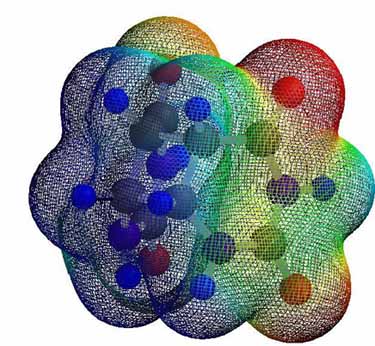
With the rapid performance increase of the available hardware, computers became an important tool in organic chemistry. Together with recent advances in quantum mechanical methods, the accurate calculation of reactants, intermediates and transition structures of a variety of reactions is now feasible. These computations yield informations that would be very difficult to obtain otherwise. Based on these results, predictions about new reactions can be made that in turn inspire new experiments to test these predictions.
During the last few years, density functional theory (DFT) emerged as a new and promising tool for quantum mechanical studies. By comparison with experimental data and more established methods such as Hartree-Fock theory and multiple configuration/complete active space calculations , the reliability of DFT methods for radical ions and other open shell species is investigated.
The appropriate method will then be used to calculate the geometric and electronic structure of the reactants and transition states involved in the reaction. In particular, the computation of the vibronic force constants allows the theoretical prediction of the kinetic isotope effects (KIE). Comparison of these theoretical values with the experimentally determined KIE provides a close link between theoretical and experimental studies.
